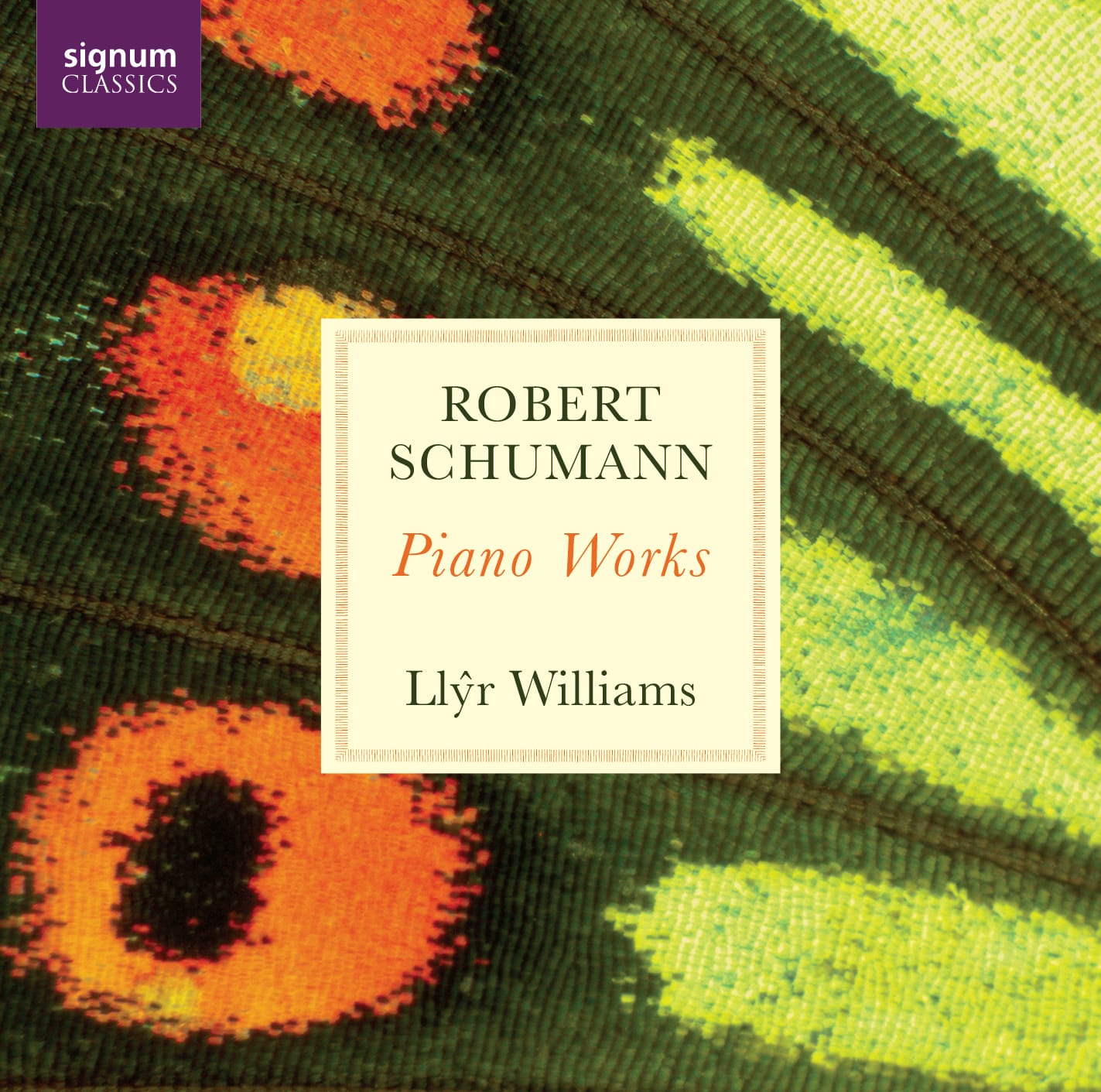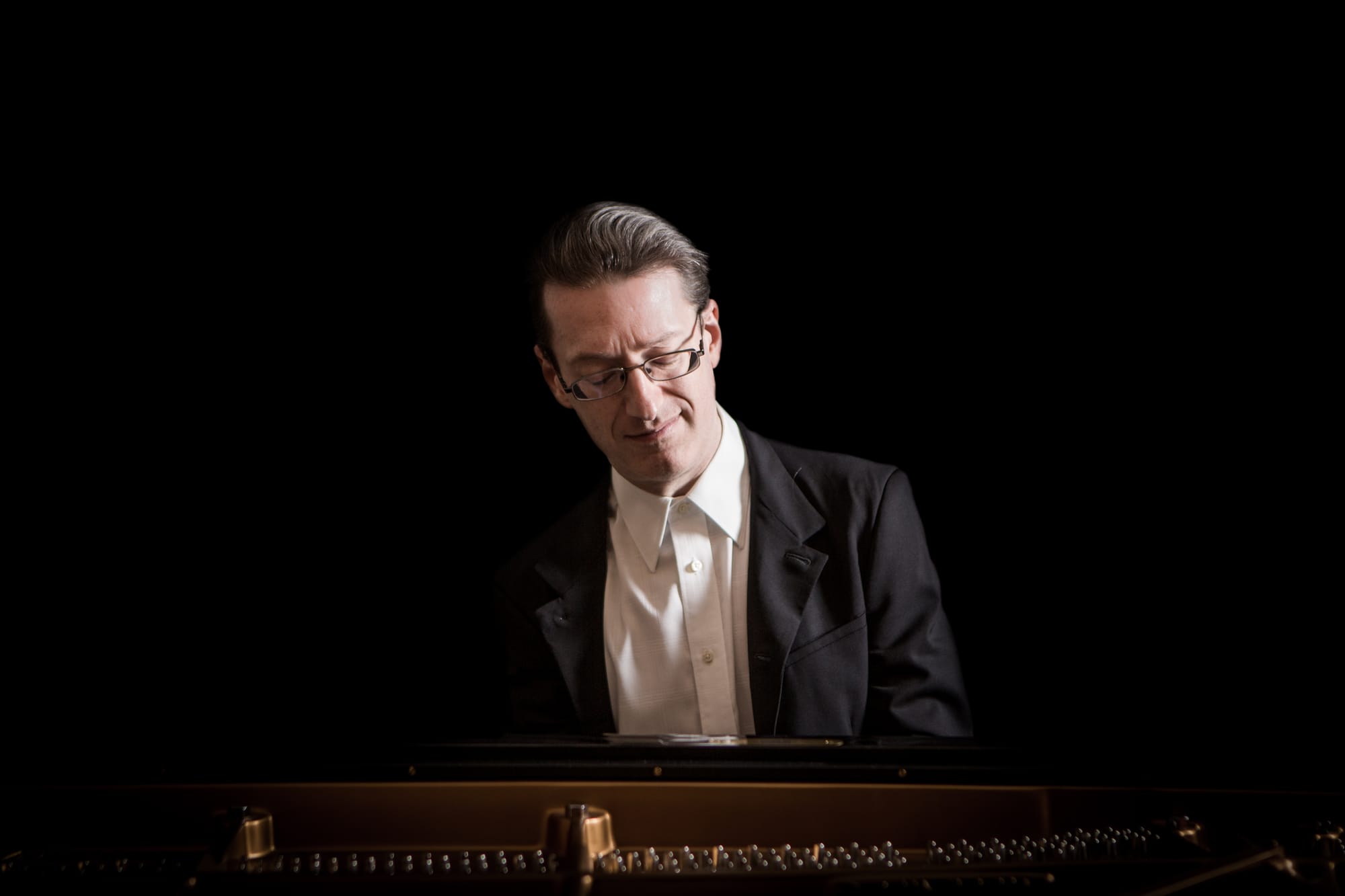Llŷr Williams plays Schumann: Album, and album launch

Schumann Llŷr Williams (piano). Wigmore Hall, London, 12.01.2024,
Papillons, Op. 2 (1830/31). Nachtstücke, Op. 23 (1839-40). Faschingsschwank aus Wien, Op. 26 (1839/40).
This was an album launch event at the Wigmore Hall: Welsh pianist Llŷr Williams’ new all-Schumann twofer comes out his very day on Signum Records. In addition to the above works, the new release also includes the Fantasie, Op. 17, the Humoreske, Op. 20 and Davidbündlertänze, Op. 6. A record signing was held after the concert.

Llŷr Williams is one of a tranche of talented pianists operating from the UK at the present time. Having heard both the discs and the concert – and both are of the highest standard – experienced live, he has just that touch more authority. What’s more, Williams has the perfect grasp of the Wigmore’s tricky acoustic, offering a full dynamic spectrum without ever over-projecting. His range of keyboard colour is extraordinary, and I wonder if he thinks orchestrally when he plays: there was no missing the two-horn fanfare figures towards the end of Papillons’ finale.
Representing early Schumann, Papillons (Butterflies) was a response to Flegeljahre (Fledgeling Years) by “Jean-Paul” (J. P. F. Richter); Schuman recreates a masked ball that appears as part of the story. The story goes that Schumann would improvise dances he imagines at the ball; and eventually he made a selection that forms Papillons. The rhythmic play of No. 6 was brilliantly done by Williams. From the opening, it was the cleanliness of Williams’ delivery that impressed. His articulation is perfect, and throughout the recital it became clear he has thought long and hard about pedalling. Technically, everything is there, and completely at the service of the music: left-hand spreads were perfectly calibrated and never once interrupted the course of the music. From scintillating passagework to deeply Romanic introspection (the ‘semplice’ of the seventh movement), this was a fine performance.
From swashbucking youth to interior musings: the Nachtstücke of 1839/40. Written less than a decade later, this is the flip side of Schumann’s persona. The first is marked ‘Mehr langsam, oft zurückhaltend (Trauerzug)', and Williams' tempo felt perfect. The trudge of chords is very of Schumann (one thinks perhaps, in a different setting, of the first of the Op. 21 Noveletten). Williams created the perfect sense of dissolution at the end. No missing the ‘marked’ aspect of the second, ’Markirt und lebhaft’ (‘Markirt’ is correct according to the score and used in the CD booklet to the accompanying release; it seemed to be ‘corrected’ to ‘Martkiert’ in the Wigmore freesheet). Some virtuoso playing here, for sure, but also a lovely carillon reference hat had so far eluded me in my experience of these pieces. Single lines spoke volumes, while lyrical themes sang. One of the hardest things to do in piano playing is to play simply (‘Einfach’); this is precisely what Schumann asks for in the fourth and final Nachtstück, and Williams was compelling here. Managing cantabile over rolled chords is not easy, either, and Williams created the most magical effect.
Then, to ‘the other Carvaval’: Faschingsschwank aus Wien, Op 26 (the title means ‘Carnival Jest from Vienna’). This is one of Schumann’s very finest piano works, and yet I can count the number of times I have heard it live on the fingers of one hand. It famously holds a quotation from the Marseillaise in its first movement. Interestingly, live it felt just a touch more ebullience would have sealed the deal; and the recording actually, to my ears, provides that (the expectation would be the reverse). Here's the recording:
Williams is superb at pinpointing the contrasts in Schumann’s music by characterising the more resolute passages with pinpoint attack against far more fluid cantabile, an opposition that seemed particularly clear in this first movement. No missing that Marseillaise (and of course, it’s not the famous French tune’s only appearance in Schumann, as it turns up again in the song Die beide Grenadieren); it had been adopted as the French national anthem in 1795, and was written relatively recently (for Schumann, that is) in 1792, ironically in Strasbourg and not Marseille, by Claude Joseph Rouget de Lisle (1760-1836). While the melody’s appearance might be difficult to miss in Faschingschwank, Schumann integrates it wonderfully, and Williams presented it perfectly. Here, incidentally, is the song:
Schumann: Die beiden Grenadieren, Dietrich Fischer-Dieskau & Gerald Moore
Live, the Romanze’s first note stabbed at the heart in a way it does not quite do on the recording. This may be a short movement, but it is expansive in expression, and Williams’ performance was mesmeric. A tiny ‘Scherzino’ was pure joy, hopping about nicely (the themes are rather angular). Of the five movements, it is the fourth that is arguably the most famous, an ’Intermezzo’ full of turbulence (its left-hand agitation seems to link to the opening of the Op. 17 Fantiaisie.
The finale’s bright, blazing opening was superb, chattering in its activity, but not in the slightest bit mechanical. So clear and even, full of contrasts, this was the perfect exemplar of what makes Williams’ Schumann so fine.
Williams is one of the few pianists who are equally at home in virtuoso and in lyrical writing, and whose music could better demonstrate this than Schumann’s?
Incidentally, those who follow Williams’ career might know a performance of Schumann’s Liederkries with Sir Bryn Terfel (Bryn Terfel: The Verbier Recital, given on July 20, 2011 and available via DG
A fine recital. Llŷr Williams appeared on BBC Radio 3’s In Tune programme on January 11, 2024 discussing this release: the programme is currently freely available via BBC Sounds.

Signum's twofer is fabulous, too. The Fantaisie is broad and muscular in its first movement, but always honouring the marking of “Durchaus phantastisch” (fantastical throughout). The evenness of Williams' left-hand, which provides the bed of semiquavers, and the truly Romantic demeanour of the right-hand theme , is a thing of wonder (the first movement is quoted above). The second movement is pretty much a pianists graveyard, and yet Wiliams makes light fo its difficulties. It is the way the finale glows as it sings that is truly inspirational, though. The piano sound, incidentally, is superb (nice to see Judith Sherman as producer. with Mike Hatch as recording engineer):
The recording of Papillons is superb: flighty, impetuous. Without hearing Williams live, this would have been entirely convincing; but live he was even finer. Hi greatest gift of the first disc, though, is the Humoreske,. Op. 20. Notoriously difficult, this 1833 piece (written in Leipzig) has a limited player ship, and it is good that Williams is among that elite. Schumann requests “Einfach” again (simple) for the first movement, and how Williams delivers (as well as Schumann's other requests: very fast, and light):
Listen to Williams' awareness of multiple lines in the second movement “Hastig”), and how he contrasts that with Schumann's musings in the next movement, another “Einfach”:
The flow of t the “Innig” section is magnificently caught; and how Williams scintillates in the “Sehr lebhaft” (Very lively):
It is, though, the sheer emotive power Williams finds in the chords of the finale that is so impressive While many find Radu Lupu the benchmark in this piece, there is more than enough shelf space for Williams:
The second disc starts with the Davidbündlertänze, a multivalent, multi-movement piece of great genius. An imagined set of dances from a wedding party, namesd fter Shcumann's music society, the Davdbündler. The theme is based on a mazurka by Clara Wieck. The set of 18 “dances” (really character pieces) contains some magical moments: try the second, “Innig”:
Williams conveys the character of each piece to perfection, while maintaining enough of aconnecting thread throughout. And as this post has talked somewhat about live versus recorded performances, it is worth mentioning that Pollini's DG recording of Davidbündlertänze is very, very fine: and yet pales in comparison to a live performance I heard at London's Royal Festival Hall. It is in the slower, reflective movements that Williams is absolutely spellbinding. Here's the seventh, “Nicht Schnell”:
... itself a massive contrast to the fast, superbly articulated ensuing “Frisch”:
Williams' Davidbündlertänze takes in hige contrasts, Erin the whispered “Zart und singend” (No. 14) to this, No. 16, “Mit gutem Humor” (and just listen to how superbly he recreates Schumann's dislocation fo hands later in th emovement!):
Williams' recreation of the penultimate “Wie aus der Ferne” (as if from a distance) is stunning - a distance not only physical, but a distanced memory. before the final “Nicht Schnell” acts as the tenderest of farewells.
A brilliant release, full of delight and revelation. This disc is available for purchase at Amazon here.
In my time, I have reviewed volumes 3 and 4 of Williams' Schubert series, also on Signum: Volume 3 holds beautiful performances of the Sonatas D 958 (C minor) and D 850 (D major); Volume 4, the Impromptus Opp. 90 and 142 posth (D 890 and 925). Links in this paragraph go to Amazon Music.
